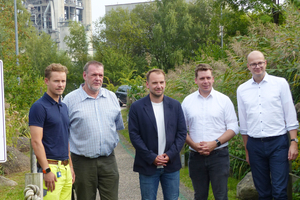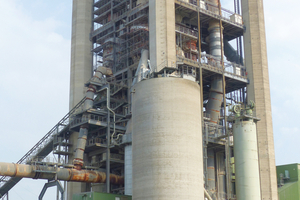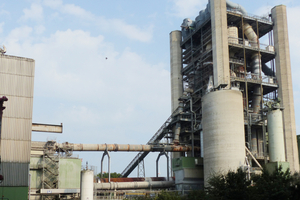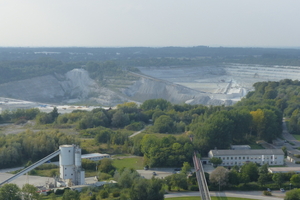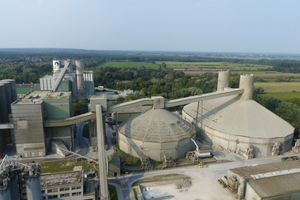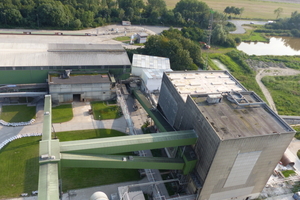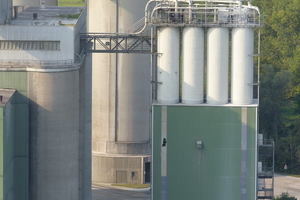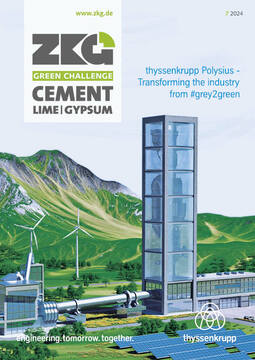Carbon2Business - Lägerdorf cement plant, the world’s first climate-neutral plant
Not far from the North Sea and the city of Neumünster in the north of Germany, one of the most modern cement plants in Germany is located directly on the A23 in Schleswig Holstein. And the goal is clear: Lägerdorf wants to become the world’s first climate-neutral cement plant in 2028. The ground-breaking ceremony for this took place on 22 April 2024 in the presence of Federal Minister of Economics Dr. Robert Harbeck, Schleswig-Holstein‘s Minister President Daniel Günther and Holcim Germany CEO Thorsten Hahn.
The Lägerdorf cement plant is part of the Holcim Group. With 64000 employees and 850 locations, the Swiss company Holcim Ltd is the third largest cement manufacturer in the world. The product portfolio includes cement and binders, aggregates, concrete and special building materials. Holcim also offers customized solutions for construction companies and architectural firms with a clear focus on climate protection and the circular economy. The subsidiary Holcim (Deutschland) GmbH, headquartered in Hamburg, employs around 1800 people at more than 130 locations in Germany, the Netherlands and France.
Founded in 1863 as Alsen’sche Portland-Zement-Fabriken, cement has been produced at the Lägerdorf site for over 160 years. In 1973, the largest Lepol rotary cement kiln in the world at the time began operations in Lägerdorf. In 1995, kiln 11 with a capacity of 4800 t/d was put into operation. In 2029, the new oxyfuel kiln plant with CO2 separation will replace kiln 11.
The Lägerdorf cement plant currently employs 340 people and 48 apprentices and students on dual study programs. 65% of the workforce has also completed their training at the plant, which certainly also stands for a good working atmosphere. The plant has been managed by Torsten Krohn since July 2018. The cement from Lägerdorf can be found in many well-known buildings in the region: the Hafencity and the Elbphilharmonie in Hamburg, the Desy or the Brunsbüttel lock, to name just a few examples.
A special feature of the Lägerdorf cement plant is that the CaCO3 source is chalk, which comes from surrounding deposits. The chalk is extracted with a water content of 40%, then dewatered to 20% water content using chamber filter presses and fed to the calciner in counterflow. Holcim is already at the project and approval planning stage in order to cover future raw material requirements. Chalk would then be available for at least another 60 years. In addition, between 80 and 90% alternative fuels will be used in Lägerdorf.
There are a number of starting points for implementing the climate turnaround in the cement industry: efficient plant technology, reducing the proportion of clinker in cement by using clinker substitutes, carbon capture and utilization processes, and consequently understanding CO2 as a raw material and incorporating it into production cycles. The main proportion of CO2 in the production of cement clinker is unavoidable CO2, as it is released during the decomposition of CaCO3. This corresponds to approx. 2/3 of the total CO2 generated during cement production.
At the heart of the CARBON2BUSINESS (C2B) project in Lägerdorf is the construction of a new kiln line 12. At the same time, the plant is to be converted to the oxyfuel process. The aim is to capture almost 100% of the CO2 produced, which corresponds to approx. 1 million t/a of CO2. In the oxyfuel process, the ambient air required for the combustion process in cement production is replaced by pure oxygen. This is produced in an air separation unit (ASU). The use of pure oxygen produces a process gas with a CO2 concentration greater than 90%. The exhaust gas is processed in the Carbon Purification Unit in a highly energy-efficient manner to produce high-purity CO2, which is then used as a raw material and carbon supplier for the chemical and other industries. The advantage of this concept is that the onshore and offshore wind turbines in Schleswig-Holstein generate more green energy than they consume. This means that the energy-intensive process described above can be operated with green energy. Holcim’s project partners for this plant are thyssenkrupp Polysius and Linde Engineering. A number of wind turbines will also be installed on the Lägersdorf site to supply energy.
The total investment costs amount to several 100 million euros. The EU is supporting the project with € 110 million from the Innovation Fund.
But where does the captured CO2 go and what is it used for? There are plans for a CO2 pipeline from Lägerdorf to the coast. A CO2 HUB is planned in Brunsbüttel. It will have a capacity of 45000 t of CO2. The HUB is designed as a multi-modal site with future expansion options. It will serve as a distribution and storage center for potential customers from the industries in Brunsbüttel. The ChemCoast Park Brunsbüttel, with 2000 ha the largest industrial area in Schleswig-Holstein, also offers potential customers. High-purity CO2 can be used to produce fuels or chemical base materials such as metane, methanol, polyurethanes or urea.
The C2B-Lägerdorf project has already won two awards at COP28: the “Energy Transition Changemakers” Award and the “Net Zero Industries Award” in the “outstanding projects” category. Robert Harbeck described the project as a “prime example of the green transformation” at the groundbreaking ceremony on April 22 this year. But the plans go even further: Holcim Deutschland’s roadmap for decarbonization plans the next conversion of the Beckum and Höver cement plants to Net-Zero from 2030.

